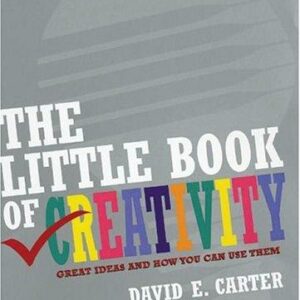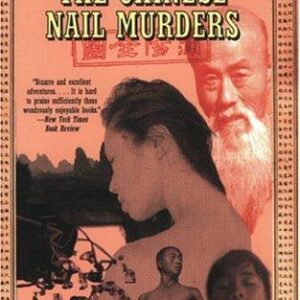Who Is Shaquille O’Neal?
$6.99
| Title | Range | Discount |
|---|---|---|
| Trade Discount | 5 + | 25% |
- Description
- Additional information
Description
NBA champion, sports analyst, and successful businessman Shaquille O’Neal is a lively and entertaining addition to the #1 New York Times Bestselling Series!Shaquille O’Neal discovered his love of basketball while spending time in an afterschool program called the Boys & Girls Club of America. Standing over six feet tall by the time he turned eleven years old, Shaq–as he is affectionately known–continued to practice the game and stunned the country with his phenomenal skills. From leading his high-school team to its first-ever state title to becoming the first pick in the 1992 NBA draft and going on to win four NBA championships, Shaq proved that he could dominate almost any player.
But the fifteen-time All Star who played for six teams throughout his nineteen-year NBA career isn’t just a force on the court, he is also an actor, television host, musician, and businessman who is always ready to crack a joke or bust a dance move.
With such a welcoming personality and immense talent, it is easy to see why Shaquille O’Neal is often considered one of the greatest players in NBA history. Ellen Labrecque is a former Senior Editor for Sports Illustrated for Kids and the author of over twenty nonfiction books for young readers, including biographies of Jim Thorpe, Kobe Bryant, and Magic Johnson, and a number of Who Was? biographies. Who Is Shaquille O’Neal?
It was February 7, 1993, and the Orlando Magic were playing the Phoenix Suns in a National Basketball Association (NBA) game. The NBA is a men’s professional basketball league that plays in North America. The Magic were only in their fourth season in the NBA. Their game was being broadcast live on national television for the first time in franchise history while a sold–out crowd of over nineteen thousand fans watched the game in the Suns’ America West Arena. Everybody was focused on rookie Shaquille O’Neal, the Magic’s seven–foot–one, three–hundred–pound center. Shaq (pronounced “Shack”) played basketball like a bulldozer. In a game filled with giants, Shaq was still taller and stronger than his opponents. Defenders who got in his way could end up on the floor, or in the third row!
“When he gets the ball under the basket, I pray he misses,” said Hakeem Olajuwon, another seven–foot–tall NBA center. “He’s so big and he can’t be stopped.”
In the matchup against the Suns, Super Shaq did not disappoint his fans. Less than three minutes into the game, he went up for a thundering two–handed dunk. The “Shaq attack” did not just bring down the rim and the backboard; it also pulled down the entire basket structure—-the rim and net, the six–foot–by–three–foot backboard, and the bar and post the backboard and rim were attached to—-onto the court. Players scattered out of the way to safety. No one had ever seen anything like it. No other player had ever had the strength and power to do something like that.
The game had to be delayed for thirty–seven minutes as workers brought in a whole new basket replacement. Shaq stood on the sideline and smiled a giant thousand–watt smile. He’s a serious basketball player, but he knows how to have fun while playing the game, too.
“I was a little surprised,” he said later about the mighty dunk. “But when it started coming down, I started running the other way.”
Shaq finished the game with twenty points, but the Magic lost the game 121–-105. The score didn’t really matter, though. The Hercules–size dunk announced to the world that twenty–year–old Shaquille O’Neal was Superman in a basketball uniform. He was a star like no other.
Chapter 1: An Army Kid
Shaquille Rashaun O’Neal was born on March 6, 1972, in Newark, New Jersey. His mother explained that “Shaquille Rashaun” is an Arabic name that means “little warrior.” (As he grew up, Shaquille’s name sometimes got shortened to Shaq by family and friends.)
Shaquille was less than eight pounds at birth—-an average weight for a baby. Shaquille’s mother, Lucille O’Neal, was six feet, two inches tall. She was eighteen years old when her son was born. Shaquille’s father, Joseph Toney, was a couple years older than Lucille, and an inch shorter. When Shaquille was only six months old, Joseph left Newark; he was later sent away to jail. At first, Lucille raised Shaquille with help from women in her family. But when her son was two years old, Lucille married Philip Harrison. Philip was an army reserve sergeant. By the time Shaquille was four years old, he was a head taller than other kids his age. When Lucille went out with her son, she had to make sure people treated Shaquille like a toddler and not like an older child.
Because of Philip’s job in the army, Shaquille and his family moved around a lot. (On average, military families are relocated every three years because some members of the military require new training while others often achieve new positions.) When Shaquille was five, his family moved from Newark to Bayonne, New Jersey. When he was in third grade, the family moved to Fort Monmouth in Eatontown, New Jersey.
Moving was hard on Shaquille. He had to try to make new friends repeatedly. He was lonely much of the time. Watching cartoons helped him adjust to each new move. His favorite character, Superman, was always there for him.
During this time, Lucille and Philip had three children together—-two daughters, Lateefah and Ayesha, and a son, Jamal. Shaq was a great big brother and always looked out for them.
“My mom taught me to change diapers, powder them, everything,” said Shaq.
Philip’s army training made him strict with the children, but especially with Shaquille. Sometimes Shaquille goofed off in school, trying to impress new friends. Philip would go to the school to make sure his stepson was paying attention and behaving. When Shaquille did something wrong, Philip would spank him to make sure he didn’t do it again.
Kids teased Shaquille for being so tall. They called him names like Shaquilla the Gorilla or Big Foot. They told him that he was probably dumb and had been held back because he was so much bigger than anybody else. Shaquille got into fights because of all the teasing.
“My parents told me to be proud [of my size], but I wasn’t,” Shaquille said. “I wanted to be normal.”
The one place Shaquille felt at home was at the local Boys and Girls Club in whichever town the family was living. He went every day after school until his mom and dad came home from work. Going to the club gave Shaquille something to do with his time. It also helped him stay out of trouble. Shaquille did his homework, played games, and spent time doing a lot of different sports, including basketball. Shaq wasn’t any good yet. He just liked playing.
“I was clumsy,” Shaquille said. “I hadn’t really grown into my body. Of course, everybody expected me to excel because I was so big. Good luck explaining to people it doesn’t work that way.”
By age eleven, Shaquille was already six feet, four inches tall. The average height for an eleven–year–old boy is almost two feet shorter. Shaquille had to stop trick–or–treating on Halloween because of his size.
“When I would go to the door,” Shaquille said, “people would just stand there, looking at me with their eyes wide open. ‘You too big to be trick–or–treating, ain’t you?’ ”
In the middle of his fifth-grade year, Shaquille’s stepdad was transferred again, this time to Fort Stewart in Hinesville, Georgia.
After a short stay in Georgia, Shaquille and his family moved again to an army base in Wiesbaden, Germany, in 1984. Although Shaquille didn’t know it at the time, his basketball career was just about to take off.
Chapter 2: Germany
There wasn’t much for Shaquille to do in Germany. He was in a whole new country where it snowed a lot and people spoke a different language. Shaquille still showed off in school to help make new friends. One day, he tried to teach his classmates how to break–dance. Many American kids were doing these acrobatic hip–hop moves, but some of the kids from Germany had never seen them before. When Shaquille got on the ground to demonstrate a move, the teacher thought he was sick, or having a seizure!
She called his parents to come and take him to the doctor, but they knew Shaquille was fine. He practiced break–dancing around the house all the time.
When Shaquille wasn’t dancing, he continued to help his mom with his brother and sisters. Shaquille loved being around younger kids. He loved playing with them and having fun. He nicknamed himself “Shaq Daddy.”
Shaquille also spent a lot of time playing basketball. His stepfather practiced with him, doing one–on–one drills and teaching him to shoot and play defense. By the time Shaquille was thirteen years old, he was six feet, eight inches tall. But he still wasn’t that great at basketball and wasn’t even playing on an organized team.
“I couldn’t jump over a pencil,” Shaquille said. “I couldn’t run or shoot. I had to practice.”
One day, an American college basketball coach visited the army base to run a basketball clinic—-a meeting where basketball players are evaluated and given instruction—-for local kids. Shaquille went to the clinic, too.
The man’s name was Dale Brown, and he was the head coach at Louisiana State University. When he saw Shaquille, he asked him, “How long have you been in the army, soldier?” Shaquille explained he wasn’t in the army. He was just a teenager. Coach Brown couldn’t believe it. He knew a kid this size could be a great basketball player one day if he worked hard.
During Shaquille’s sophomore year of high school, his family was transferred back to the United States. They moved to San Antonio, Texas. All this moving was both good and bad for Shaquille. It was difficult because he had to adjust to a new school again and again. Moving so often can be hard—-especially for a kid who didn’t blend in with everybody else. However, moving so much was also good for Shaquille. It helped him become comfortable around strangers. It made him outgoing. He loved to joke and make other people smile. This was a trait that would stick with him his whole life.
“We made friends easier and quicker and adapted to new situations simply because we had to,” Shaquille explained about himself and his siblings. “It was a survival tool.” US
Additional information
| Weight | 4.2 oz |
|---|---|
| Dimensions | 0.2500 × 5.3100 × 7.6300 in |
| ISBN-13 | |
| Imprint | |
| BISAC | |
| Format | |
| Audience | |
| Subjects | african american books, shaquille o'neal book, basketball books for kids age 6-8, baseball books for kids, basketball books for kids, basketball books for kids age 9 12, basketball books, kids sports books, sports gifts, sports books for kids age 9 12, biographies for kids age 9 12, african american childrens books, african american, black childrens books, african american children books, sports biographies, sports books for kids, JNF054020, Shaquille O'Neal, basketball, JNF018010, black history month, sports books, Sports |











